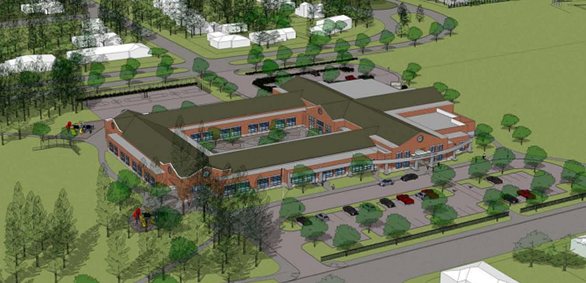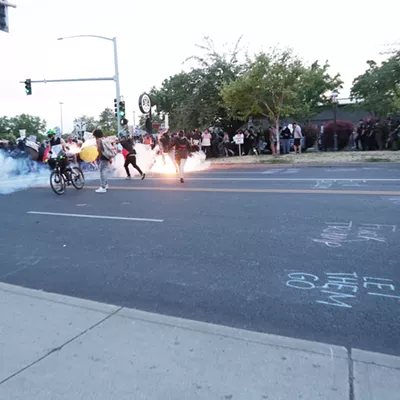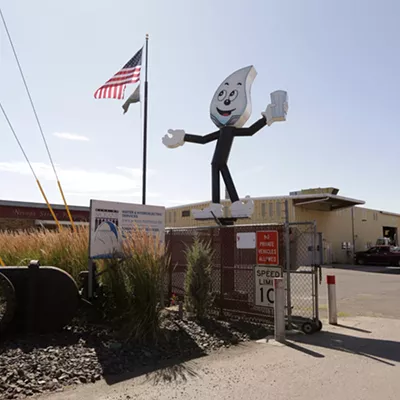Friday, June 7, 2013
Why Jefferson Elementary, Spokane's newest school, already has an overcrowding issue
During the last board of trustees election for Spokane Public Schools, debate converged on the fate of a single South Hill elementary school. Jefferson Elementary was being torn down, moved and reconstructed — while a vocal group complained about the language in the bond used to pay for construction, and about the impact on Hart Field. That was nearly two years ago. Jefferson was built, the school district won the lawsuit, the protests faded. It will open this fall.
But, this week, the same elementary school nearly become the subject of another huge controversy.
At the very tail-end of the school year, Tami Leitz, a parent of a girl with Down Syndrome at Jefferson, received a letter announcing that her daughter, and the entire “Designated Instruction” program, would be moving to Grant. The move, the letter said, was in response to “program needs, class sizes, and our continued commitment to providing quality education programs to all our students.”
“They just built a brand new building for Jefferson,” Leitz says. “Now they’re saying, oh, we don’t have space for you.”
Three times in the past four years, Leitz says, her daughter Claire has changed schools. Each time, she says, it took her daughter 6 months to get used to her new environment. This would have been the fourth move.
“This is a school that was built for my kid,” Leitz says. “This was really poor planning on the part of Spokane Public Schools.” Parents planned a protest for next Thursday. A few went to the Center for Justice. Media outlets started asking questions.
Amid all that, Superintendent Shelley Redinger decided to reverse the decision, and give the district more time to study solutions. Another letter, dated less than a week after the first one, announced that the DI program was staying at Jefferson.
The temporary solution required very little sacrifice: resource students were placed in the art room when the art teacher wasn’t there, and instead of two music rooms, the school would only have one.
Parents like Leitz breathed a sigh of relief.
But the underlying issue remains. Jefferson had just been built. The Jefferson is now struggling with an overcrowding issue.
I asked Associate Superintendent Mark Anderson and Greg Brown, Director of Capital Projects and Planning for Spokane Public Schools, about how this happened. Was it poor planning? Should Jefferson have been constructed larger to deal with incoming students?
Anderson and Brown say the district did spend a lot of time planning. They held many committee meetings and planning meetings to design the building. They had a demographer project future population growth within the Jefferson boundary.
Indeed, the new school is larger, and included two extra classrooms for flexibility.
But two big things happened that put extra stress on the school. The first, Anderson and Brown prepared for: The district decided to start going to all-day kindergarten. That took up the first classroom.
The second was trickier to predict. The number of students who had decided to “choice” into Jefferson was higher. Families not in the boundaries of Jefferson had asked if their children could be sent to Jefferson anyway. (If older siblings get in, the younger sibling gets in automatically.)
“That has influenced the population numbers,” Brown says. Within the boundaries of the Jefferson, growth may have been predictable, but not when students from outside decide to transfer in.
“Maybe it’s the old adage,” Anderson says, “build it and they will come.”
But maybe the most important thing to understand is that the sizes of elementary schools in Spokane, according to Anderson, are kept intentionally small. Elementary schools are intended to be close-knit neighborhood centers, not sprawling megaschools. (Though Spokane elementary schools are larger than the state average.)
Jefferson was designed to hover between 550 to 580 students, with a maximum of 600 students. If it goes too much higher than that, then each grade level needs an entire new class of students, and you end up with a school with 750 or 800 students.
“[If] there’s too many kids in the building, you can’t develop relationships, it requires more administrators,” Brown says.
So when a district is faced with a lot of elementary school students, the
first inclination isn’t to build a bigger school, Anderson explains. They would
consider moving programs to another school or shifting a school’s boundaries
first. In the immediate future, he says, the district will probably cut back on the number of students allowed to "choice" into Jefferson.
After all, this isn’t the first time this has happened to a school.
“Back in the late 90s, you look at a building like Willard that had over 600 kids in it,” Brown says. “It should be something we can tolerate, so we can come up with a longer-term solution.”
Tags: Daniel Walters , News , Image















